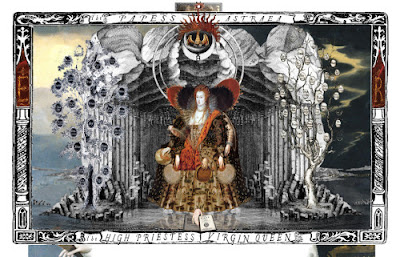 |
| Hermit card of the Rider-Waite tarot deck, c. 1910. |
I’m not saying either Robert Frost or his poem here has any connection to tarot symbolism. I’m only personally putting the two together during a cold weekend on the precipice of winter. H/T to the Academy of American Poets for all the text below.
“An Old Man’s Winter Night”
By Robert Frost
All out of doors looked darkly in at him
Through the thin frost, almost in separate stars,
That gathers on the pane in empty rooms.
What kept his eyes from giving back the gaze
Was the lamp tilted near them in his hand.
What kept him from remembering what it was
That brought him to that creaking room was age.
He stood with barrels round him—at a loss.
And having scared the cellar under him
In clomping there, he scared it once again
In clomping off;—and scared the outer night,
Which has its sounds, familiar, like the roar
Of trees and crack of branches, common things,
But nothing so like beating on a box.
A light he was to no one but himself
Where now he sat, concerned with he knew what,
A quiet light, and then not even that.
He consigned to the moon,—such as she was,
So late-arising,—to the broken moon
As better than the sun in any case
For such a charge, his snow upon the roof,
His icicles along the wall to keep;
And slept. The log that shifted with a jolt
Once in the stove, disturbed him and he shifted,
And eased his heavy breathing, but still slept.
One aged man—one man—can’t fill a house,
A farm, a countryside, or if he can,
It’s thus he does it of a winter night.
 |
|
Bro. Colin Browne’s Masonic tarot deck Hermit. |
“An Old Man’s Winter Night” was originally published in the 1916 edition of Mountain Interval (Henry Holt and Company) and appeared again in the revised edition of Mountain Interval in 1921 (Henry Holt and Company).
Robert Frost was born on March 26, 1874, in San Francisco. His collections of poetry include New Hampshire (Henry Holt and Company, 1923), Steeple Bush (Henry Holt and Company, 1947), and In the Clearing (Holt Rinehart & Winston, 1962). Frost won four Pulitzer Prizes during his lifetime and served as U.S. Poet Laureate from 1958 to 1959. He died on January 29, 1963.























